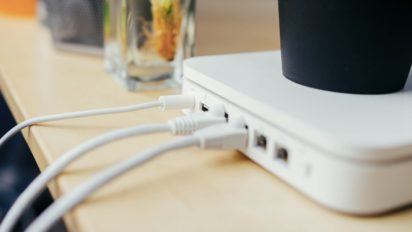

The manual reboot method works just fine and is manageable as long as you’re not having to do it all the time. To do this on a regular basis, simply set an alarm or put it in your calendar to do it every two weeks, every month, or whatever interval works. If you restart the router too soon, you may end up right back where you started.
#Centurylink wireless internet speed test full
Many sources say to wait one full minute, just to be sure. Electrical current can still travel through the circuits (the capacitors, to be exact) for several seconds after the power is disconnected, so to be on the safe side, wait a minimum of 30 seconds to allow the router to fully cycle down and clear its memory. Note that it is important to wait long enough. Shown below are two of CenturyLink’s most popular modems, the Greenwave C4000LG(left) and the Actiontec C3000A(right). Whatever style of modem/router you have, you can do a manual reboot by unplugging the power cable (typically black) from the power port on the back of the router. After plugging the router back in, it will usually take another minute or two to reconnect to the network and get fully booted up and ready to go. To manually reboot your router, unplug it (you can remove the power cord from the wall outlet OR from the power port on the back of the router). For dated routers or ones that seem to be suffering from a system problem, consider rebooting weekly or even daily. With newer units, you may only need to reboot it monthly, or whenever it gets bogged down or performance is spotty. No matter what kind of router you have, it can benefit your WiFi performance to set up a regularly recurring reboot. But you’ll notice we frequently refer to it as a router and occasionally as a modem, the terms preferred by most users. With CenturyLink, our modem/router combo is officially called a residential gateway. However, these days the router is often combined with the modem, which delivers the internet connection from the provider’s network into your home. A wireless router is the equipment that transmits your internet connection to a WiFi signal that you can use throughout your home. Is it a modem or a router? Many people use these two terms somewhat interchangeably. It also allows the router to re-select the least crowded channel for each frequency, which means a stronger connection to your devices. This is sometimes called a “power-cycle.” Rebooting your router cleans out the device’s short-term memory (also called “cache”) to keep it running more smoothly. Depending on the age and health of your router, a reboot should be done anywhere from monthly to daily. You should do the same with your router to give it the opportunity to reset and start fresh. When those devices are not working right, what’s the first thing you do? That’s right - restart it.

We’re used to rebooting our phones and computers. Place your router in an area that is away from heat sources and has decent circulation to prevent overheating.

To keep your router healthy, it’s important to: Like any computer, routers can get flaky or buggy if they are left on for too long, if they overheat, or if the operating system or firmware gets out of date. Treating your wireless router as the computing workhorse it is may help you understand the importance of maintaining it to keep your WiFi running as smoothly as possible.


 0 kommentar(er)
0 kommentar(er)
